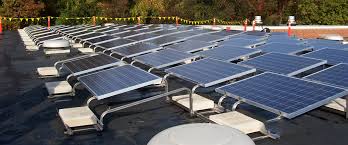U.S. Treasury Finalizes Rules for Clean Energy Bonus Program in Low-Income Communities

The U.S. Treasury Department and Internal Revenue Service on Jan. 8 released the final rules and guidelines for the 48E(h) Clean Electricity Low-Income Communities Bonus Credit Amount Program. The bonus credit program seeks to reduce energy costs and boost clean energy investment in low-income communities, including Indian Lands and affordable housing. The new regulations expand the list of eligible technologies, which currently include sources such as wind, solar, hydropower, and geothermal.
The program increases the amount of clean electricity investment tax credits for certain applicable facilities under Internal Revenue Code Section 48E. The full list of clean energy technologies eligible for the credit program is available in the Section 48E Clean Electricity Investment Credit final rules. The department issued the final rules for the Clean Electricity Investment and Production Tax Credits on Jan. 7.
In addition to expanding the list of eligible technologies, the final rules for the program also expand the list of housing programs that can qualify as low-income residential building projects and specify the economic value provided by projects to low-income communities.
The credit program will distribute bonuses to 1.8 gigawatts (GW) of clean electricity generation every year from 2025 to 2032. According to the new rules, the program divides the total 1.8 GW annual capacity limitation value into four categories: 600 megawatts (MW) for facilities located in a low-income community; 200 MW for facilities in Indian Lands; 200 MW for qualified Low-Income Residential Building Projects; and 800 MW for qualified Low-Income Economic Benefit Projects.
The 48(e) program received almost 60,000 applications with a combined generation capacity of over 1.9 gigawatts of clean power in its second year. The 48 E(h) credit provides an additional 10 or 20 percentage points to the 30 percent Clean Electricity Investment Tax Credit. The 2025 application cycle opens on Jan.16 and closes on Aug. 1, 2025.
The program could generate over $3.5 billion in low-income communities and offset an estimated $270 million in energy costs per year, based on the department’s analysis of the first year of the program. Selected applications have the potential to generate around $4 billion in public and private investment into communities and offset annual energy costs of nearly $350 million.
EnerKnol Pulses like this one are powered by the EnerKnol Platform—the first comprehensive database for real-time energy policy tracking. Sign up for a free trial below for access to key regulatory data and deep industry insights across the energy spectrum.
ACCESS FREE TRIAL